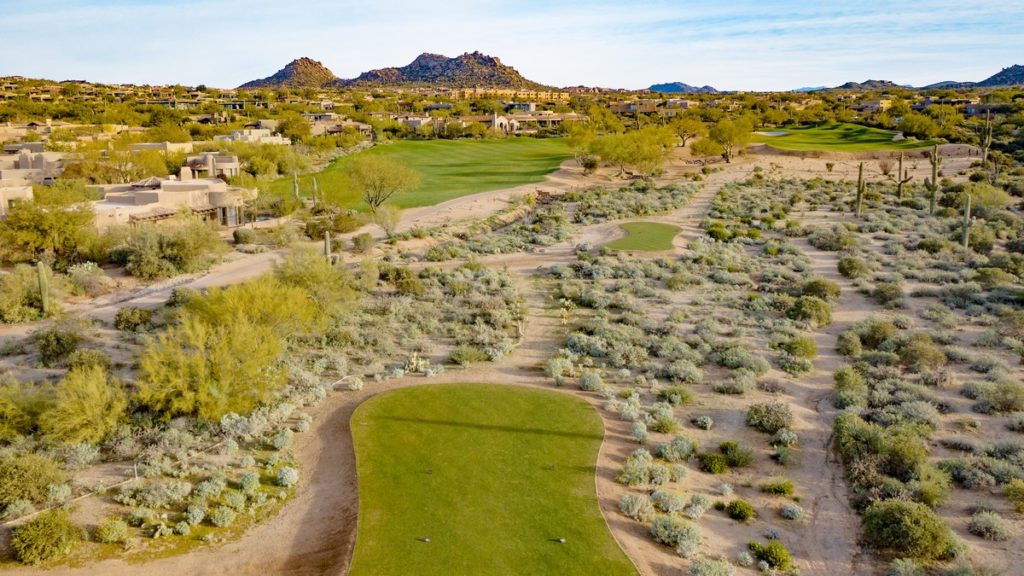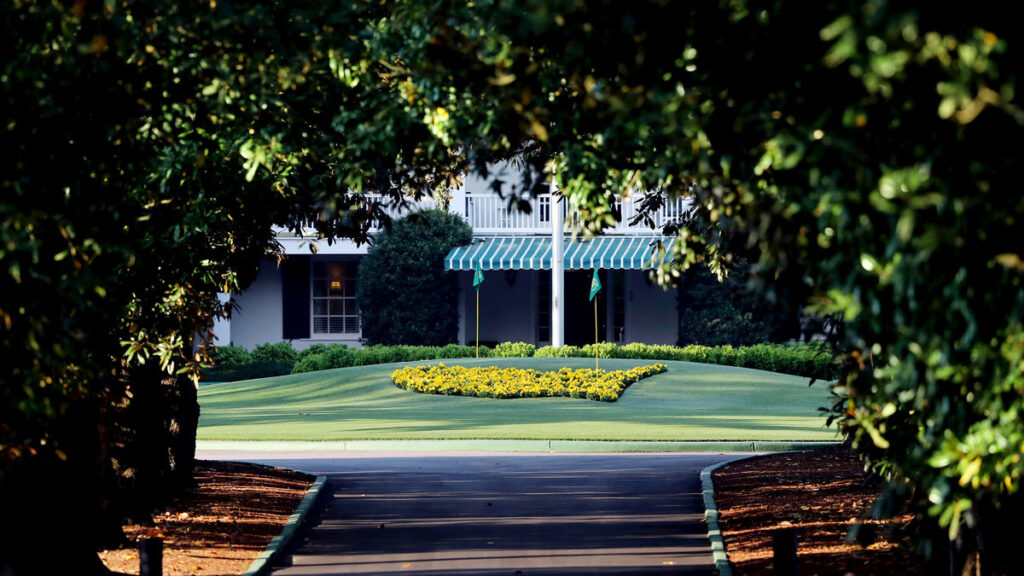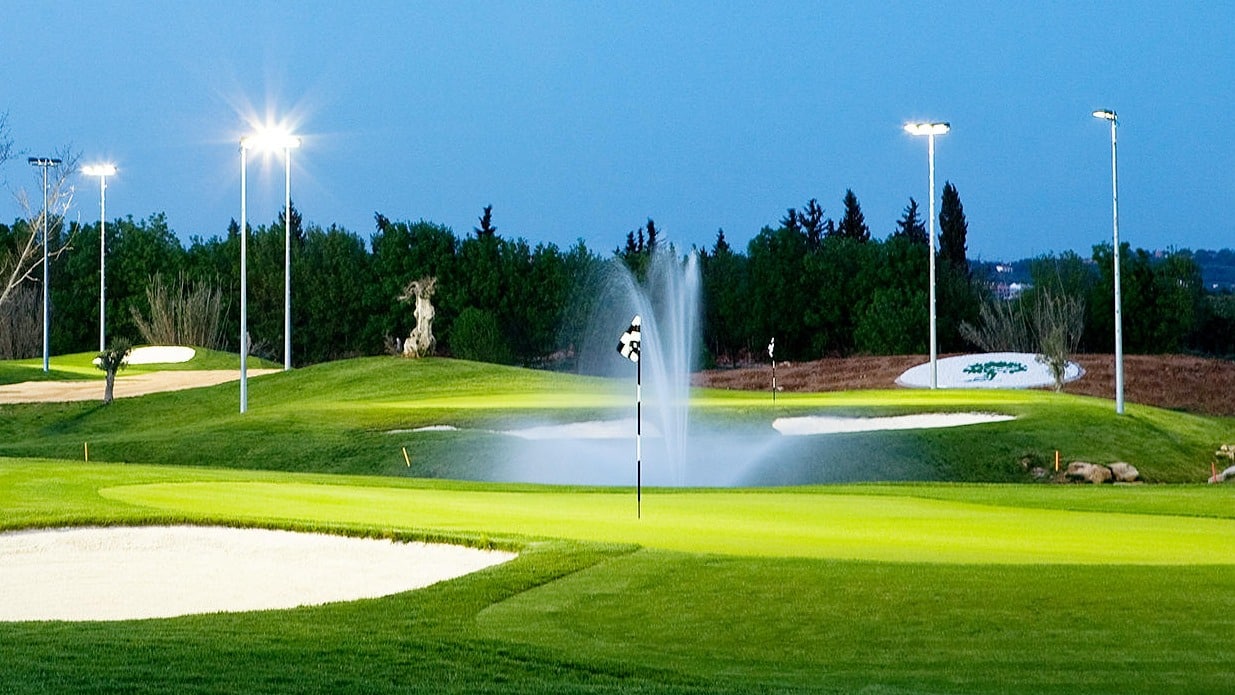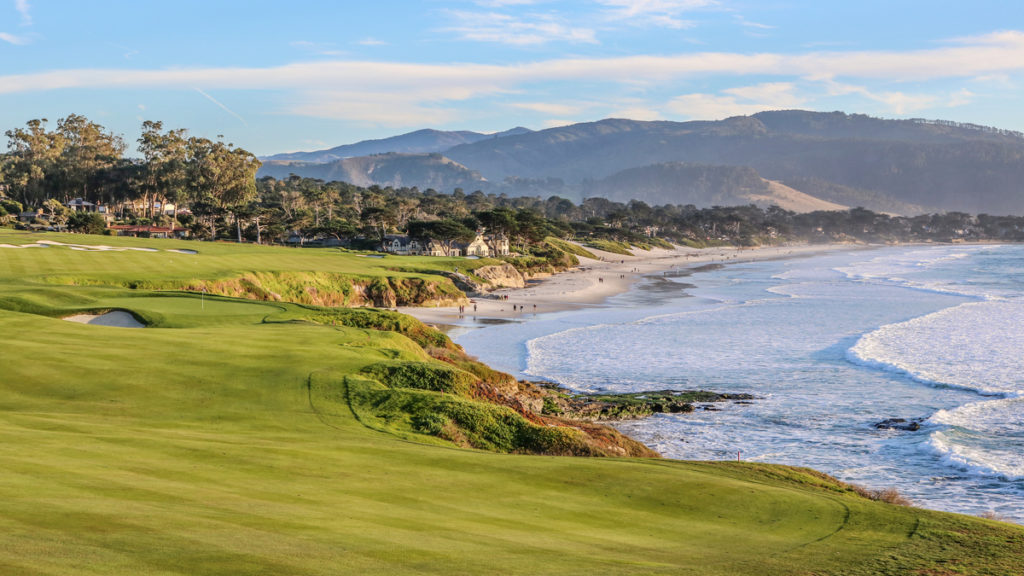There are many different types of golf courses, each offering various challenges and experiences based on location, design, and intended use.
Often, the type of course will determine the style of play required — most famously, Links courses.
Links courses, as you’ll read below, are found in coastal areas where the weather can be highly unpredictable, along with strong, gusty winds. This requires a lower ball flight, varying club distances and an element of creativity. You certainly wouldn’t approach a Links course the same way you would a Parkland.
So, below are the main types of golf courses found around the world, along with a brief description of the characteristics and example courses.
Different types of golf courses
Links Courses

Location: Typically found in coastal areas, especially in Scotland and Ireland.
Characteristics: Built on sandy soil with natural undulations, minimal trees, and often exposed to wind. The terrain is generally firm, with fast fairways and large, undulating greens.
Examples of Links courses: St. Andrews (Scotland), Royal Portrush (Northern Ireland).
Parkland Courses

Location: Inland, often within parks or wooded areas.
Characteristics: Characterised by lush, green fairways lined with trees, more manicured landscapes, and fewer natural hazards. These courses are less exposed to wind.
Examples of Parkland courses: Augusta National (Georgia, USA), Wentworth Club (England).
Desert Courses

Location: Built in arid, desert regions, primarily in the southwestern United States and the Middle East.
Characteristics: Feature lush fairways contrasted against the arid, sandy desert surroundings. Water conservation is a significant factor in maintenance.
Examples of Desert courses: TPC Scottsdale (Arizona, USA), Emirates Golf Club (Dubai, UAE).
Heathland Courses

Location: Typically found inland, particularly in the UK.
Characteristics: Similar to links courses but with more trees and shrubs. The terrain is sandy and well-drained, often with heather, gorse, and bracken. These courses are more inland and feature fewer extreme natural elements than links courses.
Examples of Heathland courses: Sunningdale Golf Club (England), Walton Heath (England).
Downland Courses

Location: Rolling hills and chalky soil regions, particularly in southern England.
Characteristics: Rolling terrain, open and windswept, sparse vegetation, fast-draining chalky soil, natural bunkers.
Examples of Downland courses: Royal Winchester Golf Club (England), The Downs Course at Goodwood (West Sussex, England).
Sandbelt Courses

Location: Southeastern suburbs of Melbourne, Australia.
Characteristics: Sandy soil with excellent drainage, large and strategic bunkers, fast fairways, and firm, undulating greens.
Examples of Sandbelt courses: Royal Melbourne Golf Club (Australia), Kingston Heath Golf Club (Australia).
Mountain Courses

Location: Built in mountainous regions.
Characteristics: Often feature dramatic elevation changes, stunning views, and a rugged landscape. The terrain can be challenging, with narrow fairways and sloping greens.
Examples of Mountain courses: Banff Springs (Canada), The Broadmoor (Colorado, USA).
Championship Courses

Location: Found globally, often at prestigious clubs and resorts.
Characteristics: Designed to meet the standards for hosting professional tournaments. These courses are typically longer, with challenging layouts that test every aspect of a player’s game. They are meticulously maintained and often feature tough rough, fast greens, and strategic hazards.
Examples of Championship courses: Augusta National (Georgia, USA), The Old Course at St. Andrews (Scotland), Pebble Beach Golf Links (California, USA).
Private Courses

Location: Typically located in exclusive neighbourhoods or country clubs.
Characteristics: Membership-based with restricted access, offering high-quality facilities and amenities. Course design is often top-tier, with careful maintenance.
Examples of Private courses: Augusta National (Georgia, USA), Pine Valley (New Jersey, USA).
Executive Courses

Location: Executive courses can be found in various settings, including residential areas and resorts.
Characteristics: Shorter than standard courses, with a mix of par-3 and par-4 holes, and fewer or no par-5 holes. These courses are designed for quicker play or for players focusing on their short game.
Examples of Executive courses: Palm Beach Par 3 (Florida, USA), Cloud 9 at Angel Park (Nevada, USA).
Par-3 Courses

Location: Often found as part of larger golf facilities, resorts, or standalone.
Characteristics: Consist solely of par-3 holes, usually between 9 and 18 holes. Ideal for beginners or those practising their short game.
Examples of Par-3 courses: Augusta National Par-3 Course (Georgia, USA), Top of the Rock (Missouri, USA).
Resort Courses

Location: Part of a resort complex, often in vacation destinations.
Characteristics: Designed to be player-friendly, with scenic views, luxury amenities, and high-quality maintenance. They cater to a wide range of players, from beginners to experienced golfers.
Examples of Resort courses: Pebble Beach Golf Links (California, USA), Kapalua (Hawaii, USA).
Public Courses

Location: Found in various settings, from urban to rural areas.
Characteristics: Open to the general public, often maintained by municipalities or private companies. The quality and design can vary widely.
Examples of Public courses: Bethpage State Park (New York, USA), Torrey Pines (California, USA).

